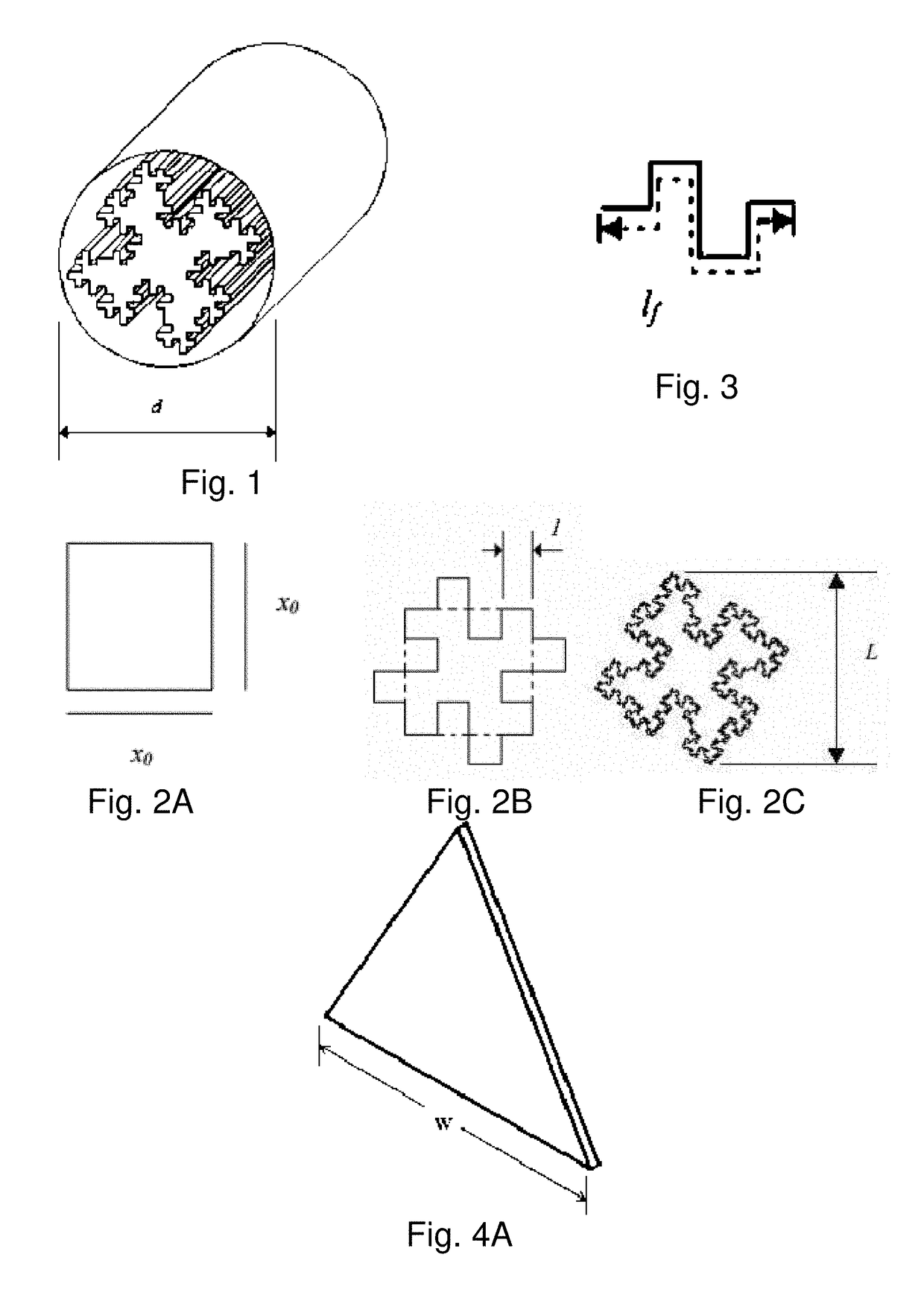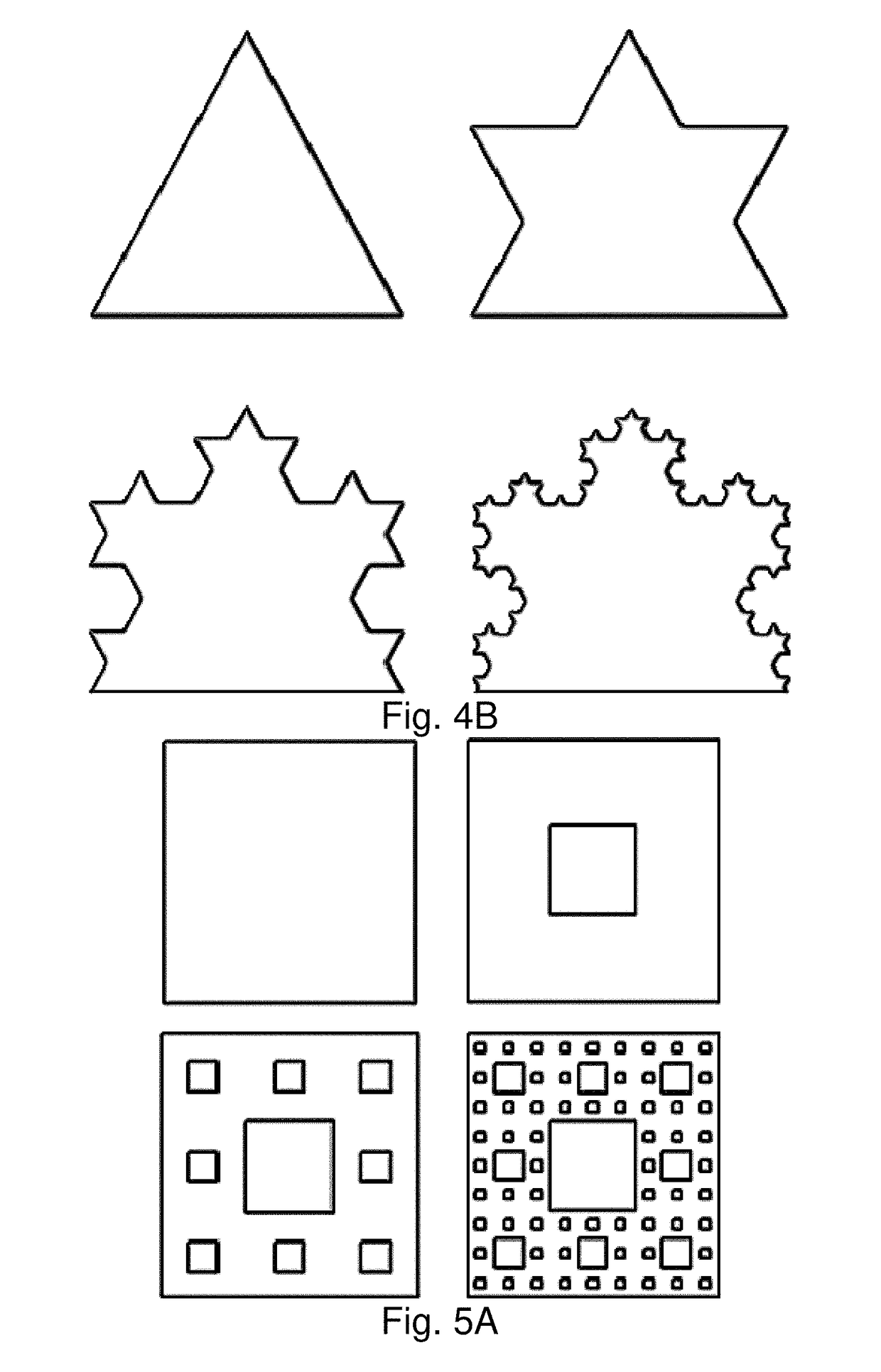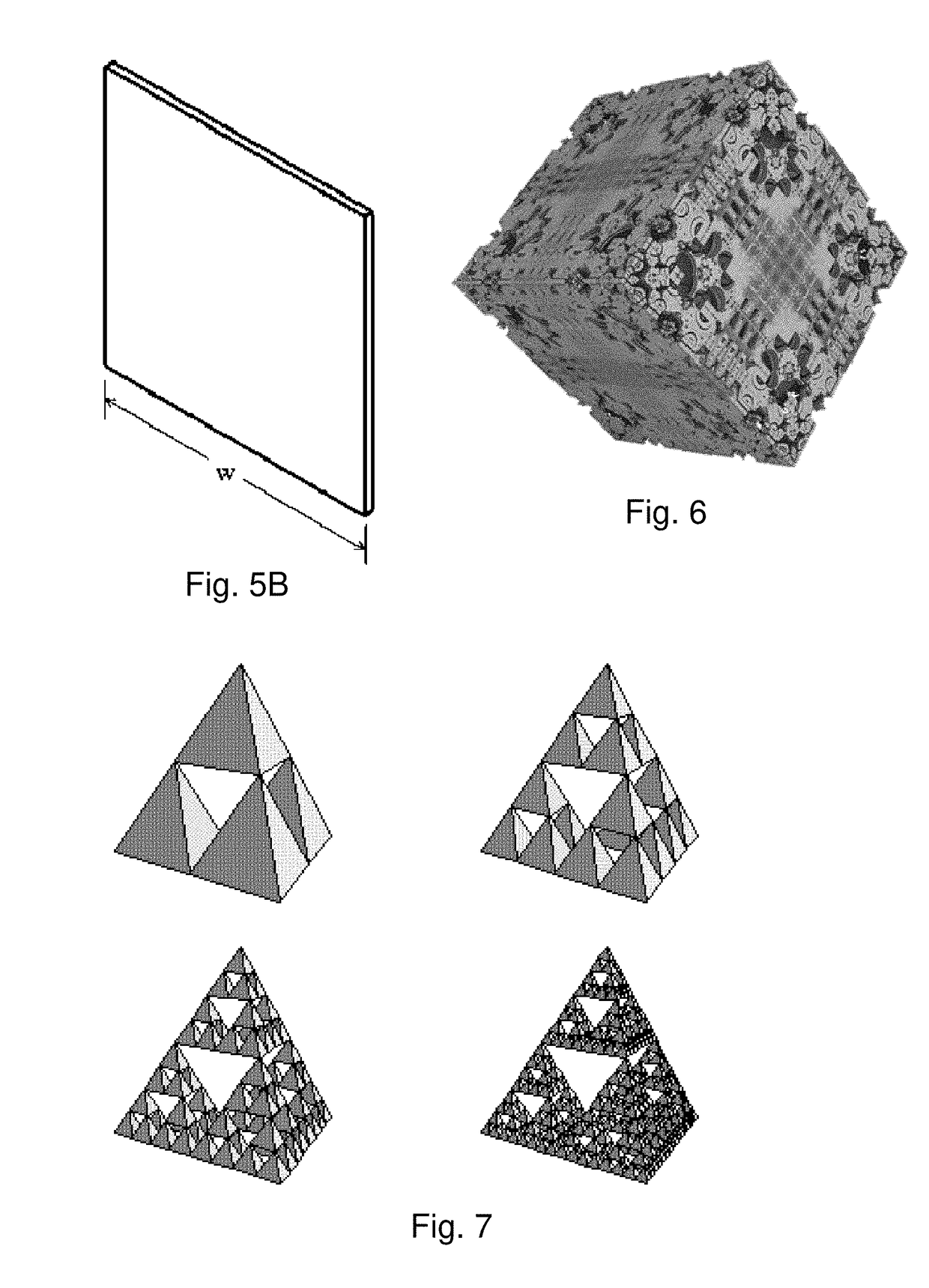Multi-fractal heatsink system and method
a heat sink and multi-fractal technology, applied in the direction of lighting, heating apparatus, instruments, etc., can solve the problems of insufficient cooling, poor heat loss efficiency, and the possibility of diminishing the return of larger heat sinks, etc., to achieve low noise, facilitate heat exchange, and reduce the effect of heat loss
- Summary
- Abstract
- Description
- Claims
- Application Information
AI Technical Summary
Benefits of technology
Problems solved by technology
Method used
Image
Examples
Embodiment Construction
[0258]FIG. 1 illustrates a fractal heat sink that is an exemplary embodiment of the invention. In this embodiment, the heat sink is based on a Quadratic Koch Island. In a shorter length, this also represents a fractal flow filter. The Quadratic Koch Island may have a regular or irregular twist pattern within the shroud. FIG. 2A illustrates the basis for the Quadratic Koch Island. FIG. 2B illustrates a Quadratic Koch Island obtained after application of one iteration. FIG. 2C illustrates a Quadratic Koch Island obtained after application of several iterations. FIG. 3 illustrates the total length of all the fractal segments of a Quadratic Koch Island.
[0259]FIG. 2A illustrates a square with dimension x0 that forms the basis for the Quadratic Koch Island. FIG. 2B illustrates a Quadratic Koch Island obtained after application of one fractal iteration on the square. The fractal with section lengths of l is applied to each side of the square in the first iteration. Similarly, after several...
PUM
 Login to View More
Login to View More Abstract
Description
Claims
Application Information
 Login to View More
Login to View More - R&D
- Intellectual Property
- Life Sciences
- Materials
- Tech Scout
- Unparalleled Data Quality
- Higher Quality Content
- 60% Fewer Hallucinations
Browse by: Latest US Patents, China's latest patents, Technical Efficacy Thesaurus, Application Domain, Technology Topic, Popular Technical Reports.
© 2025 PatSnap. All rights reserved.Legal|Privacy policy|Modern Slavery Act Transparency Statement|Sitemap|About US| Contact US: help@patsnap.com



